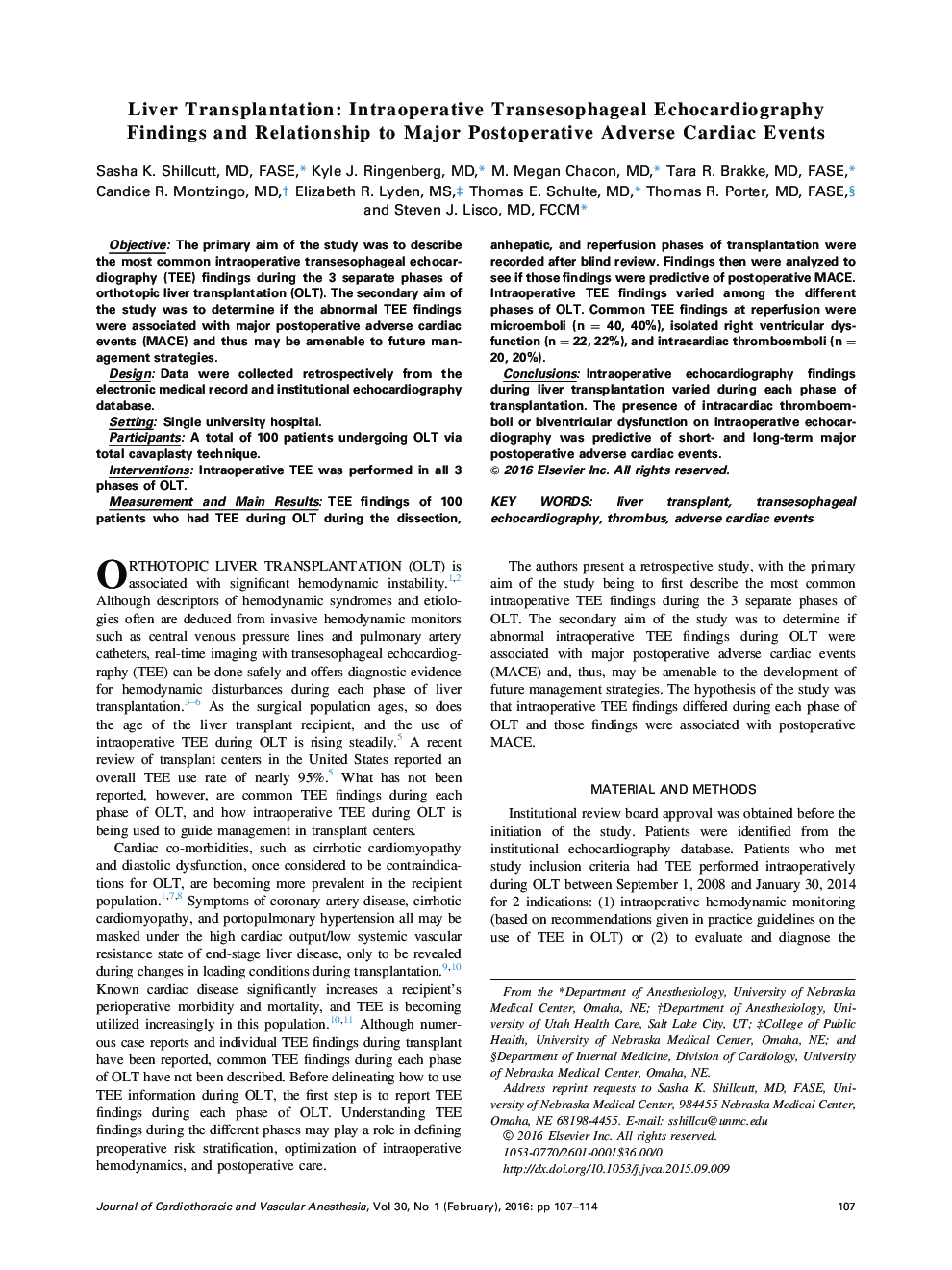| Article ID | Journal | Published Year | Pages | File Type |
|---|---|---|---|---|
| 2759092 | Journal of Cardiothoracic and Vascular Anesthesia | 2016 | 8 Pages |
ObjectiveThe primary aim of the study was to describe the most common intraoperative transesophageal echocardiography (TEE) findings during the 3 separate phases of orthotopic liver transplantation (OLT). The secondary aim of the study was to determine if the abnormal TEE findings were associated with major postoperative adverse cardiac events (MACE) and thus may be amenable to future management strategies.DesignData were collected retrospectively from the electronic medical record and institutional echocardiography database.SettingSingle university hospital.ParticipantsA total of 100 patients undergoing OLT via total cavaplasty technique.InterventionsIntraoperative TEE was performed in all 3 phases of OLT.Measurement and Main ResultsTEE findings of 100 patients who had TEE during OLT during the dissection, anhepatic, and reperfusion phases of transplantation were recorded after blind review. Findings then were analyzed to see if those findings were predictive of postoperative MACE. Intraoperative TEE findings varied among the different phases of OLT. Common TEE findings at reperfusion were microemboli (n = 40, 40%), isolated right ventricular dysfunction (n = 22, 22%), and intracardiac thromboemboli (n = 20, 20%).ConclusionsIntraoperative echocardiography findings during liver transplantation varied during each phase of transplantation. The presence of intracardiac thromboemboli or biventricular dysfunction on intraoperative echocardiography was predictive of short- and long-term major postoperative adverse cardiac events.
